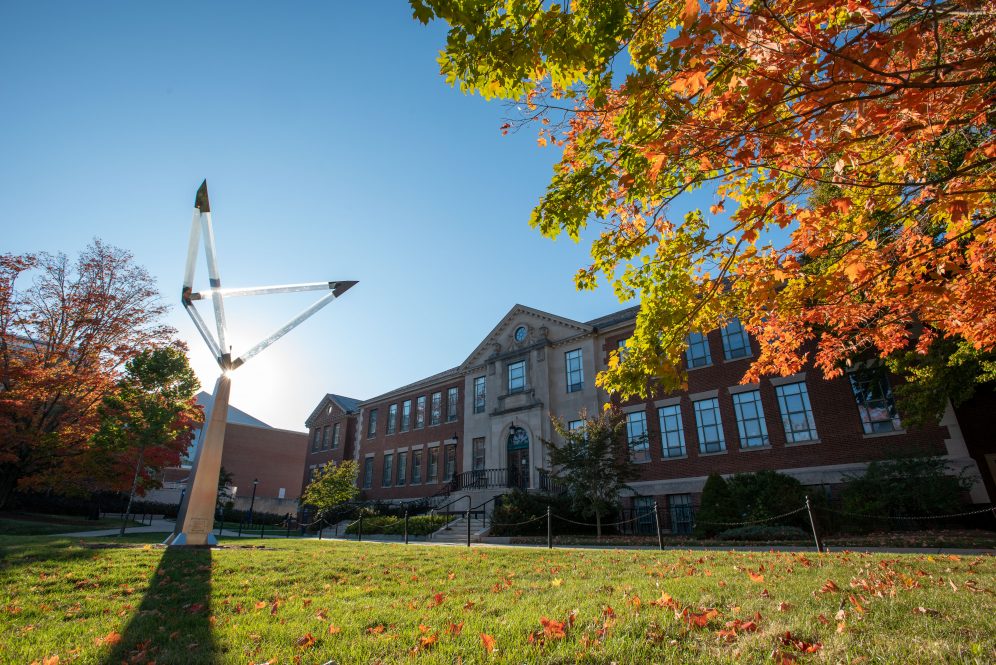UConn’s School of Engineering is being designated as a college and renamed to follow suit, reflecting its rapid growth and its importance in producing highly educated graduates who bolster Connecticut’s high-tech economy.
The update to the UConn College of Engineering’s name will also include two internal changes: the Department of Computer Science and Engineering will become the School of Computing; and the Department of Mechanical Engineering will become the School of Mechanical, Aerospace, and Manufacturing Engineering.
The UConn Board of Trustees approved the changes on Wednesday, and they go into effect Nov. 1.
The renaming will not require additional funds or new positions, nor will it change the academic requirements of currently enrolled students or credentials of alumni who graduated when it was still the School of Engineering.
About 65% of Connecticut’s engineers are UConn graduates, and the continued demand for engineers in the state has driven growth in the school’s enrollment, degree offerings, curricula, industry partnerships, and research impact over the last several years.
“Elevating the School of Engineering to the College of Engineering will enhance UConn Engineering’s external profile, streamline operations internally, and allow for future growth,” Anne D’Alleva, UConn’s provost and executive vice president for academic affairs, told the Board of Trustees in her recommendation to approve the change.
Many peer institutions follow a similar model, and UConn’s engineering programs are in line with other colleges at the University including the College of Agriculture, Health, and Natural Resources as well as the College of Liberal Arts and Sciences, D’Alleva says.
Five departments will comprise the newly renamed College of Engineering, including Biomedical Engineering; Chemical and Biomolecular Engineering; Civil and Environmental Engineering; Electrical and Computer Engineering; and Materials Science and Engineering.
The school is also home to more than 25 centers and institutes. Its alumni have gone on to success in state, national, and international industries and employers, even counting two prominent NASA astronauts (Franklin Chang-Diaz ’73 and Rick Mastracchio ’82) among its graduates.
Today, the UConn School of Engineering has more than 3,600 undergraduates, 900 graduate students, more than 600 students enrolled in professional education programs through the new Center for Advanced Engineering Education, and more than $68 million in total research expenditures in the last full fiscal year.
It also has 147 tenured and tenure-track faculty – including President Radenka Maric – and 35 teaching faculty, 61 deanery and academic staff members, and 29 research support employees.
“This proposal is a significant step forward for our institution and holds great promise for the future of our engineering programs. The UConn School of Engineering has been a cornerstone of academic excellence, consistently delivering high-quality education, groundbreaking research, and impactful community and industry engagement,” Kazem Kazerounian, the school’s dean, wrote to D’Alleva in a letter of support for the proposal.
“However, as higher education evolves, and the diversity and size of our programs increase, it has become clear that this transition is timely and essential for our continued growth and success,” he added.
He also noted that elevating the school to a college offers internal and external advantages, including enhancing its visibility among peer institutions, streamlining operations, encouraging specialization, and promoting excellence within the programs.
“It also provides the flexibility needed to support future growth and innovation in education, research, and community engagement,” Kazerounian wrote. “It aligns with the aspirations of our faculty and sets the stage for our school’s continued growth and success.”
The school has its roots in UConn’s earliest days, with its programs spanning more than a century and being offered under every iteration of the institution from the Storrs Agricultural School to the Connecticut Agricultural College, Connecticut State College, and University of Connecticut.
The first classes in mechanical arts and agricultural mechanics had already been in place when the institution launched a two-year program in mechanical arts in 1901. Five years later, the program was expanded to a four-year degree-granting program in mechanical engineering.
In 1920, the Division of Mechanical Engineering moved into its own building on the Storrs campus and graduated its first engineering student. In 1935, its programs expanded to include civil, electrical and mechanical engineering offered within the Division of Engineering.
Its second dedicated engineering building – now known interchangeably as Engineering I and the Francis L. Castleman Building – was completed in 1939, and the School of Engineering was formally established in 1940 with separate departments in civil, electrical, and mechanical engineering.



